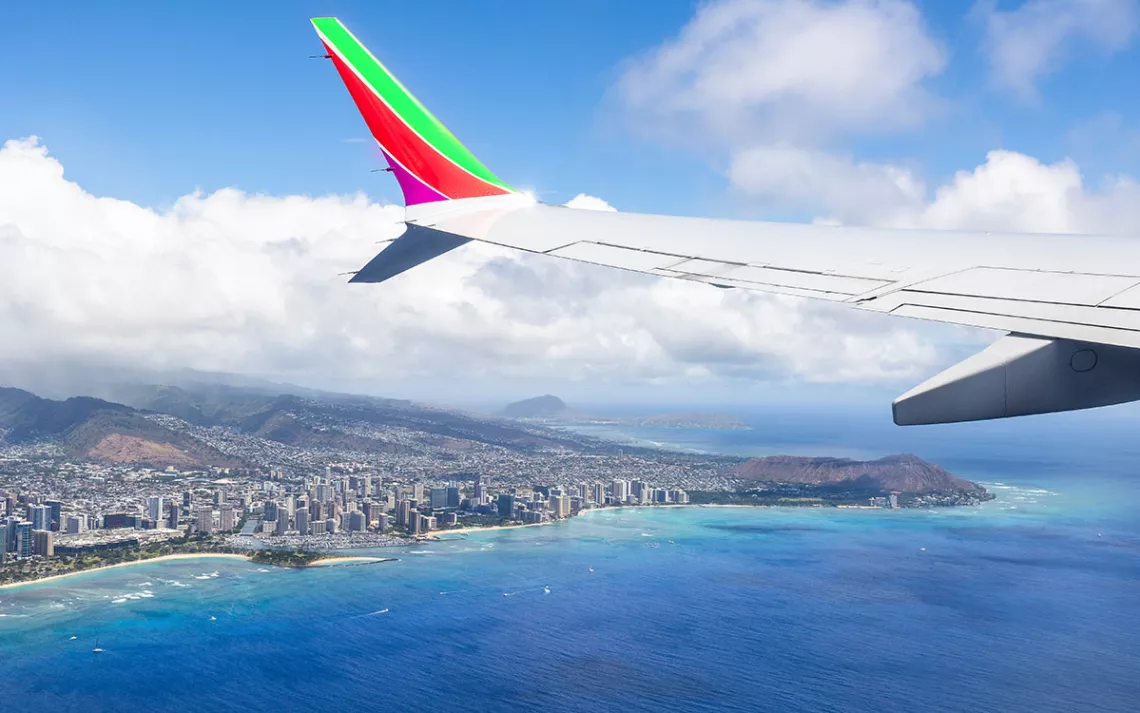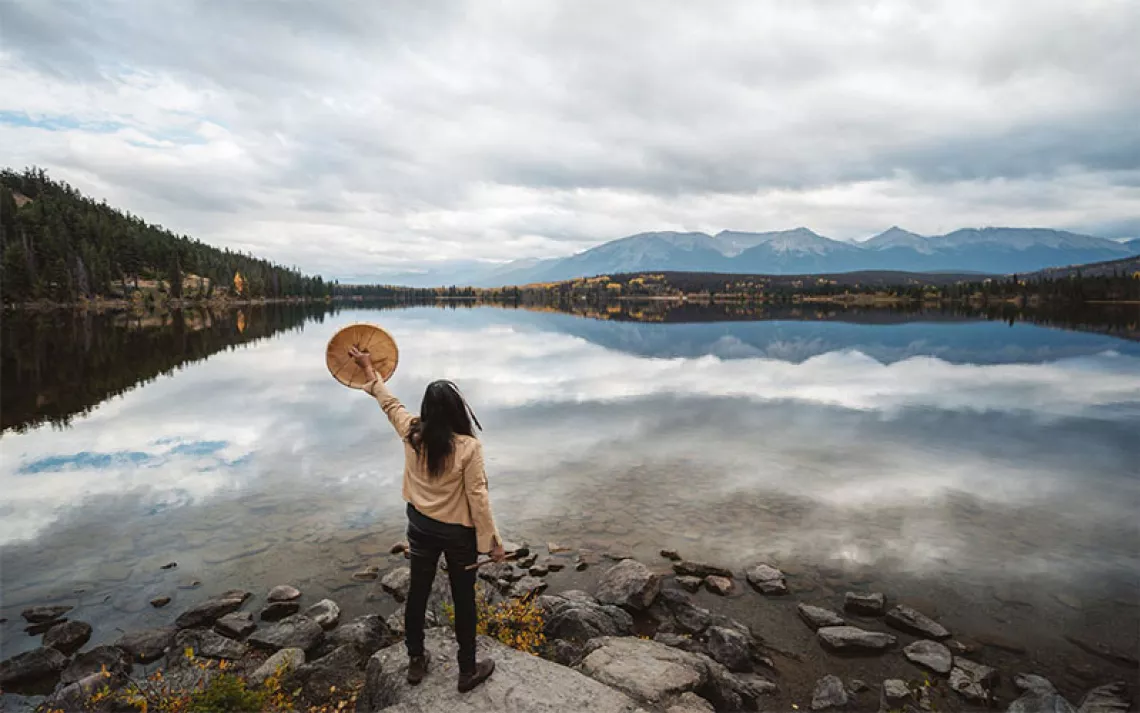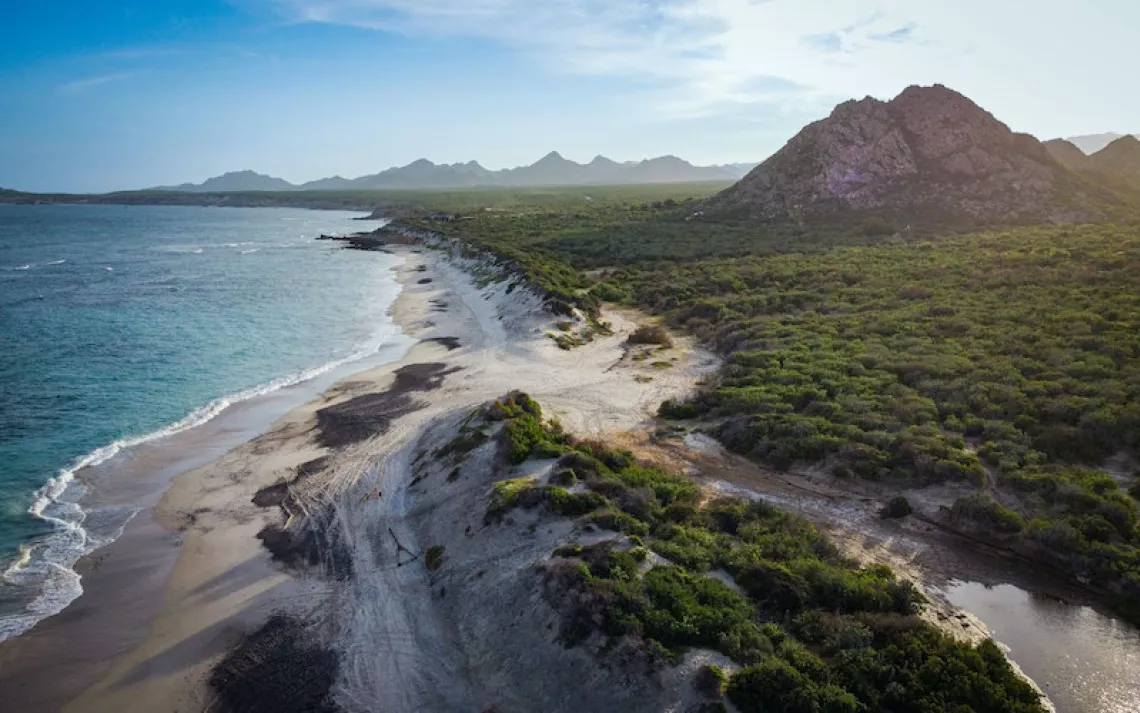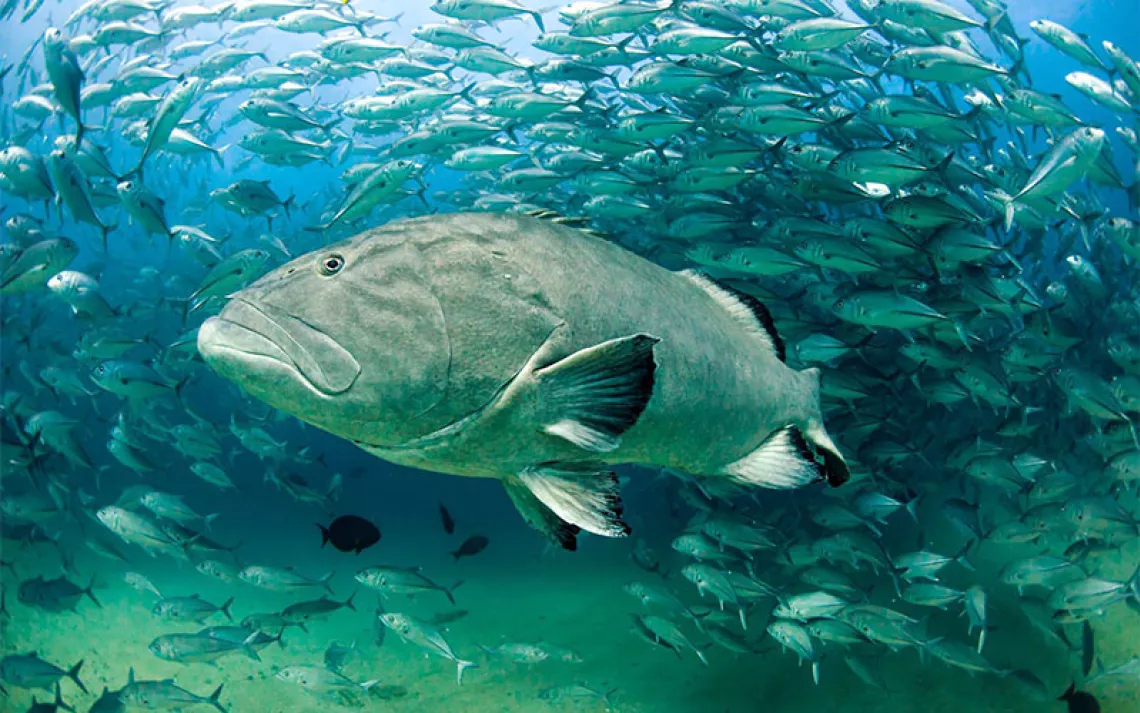Tourism Can Wreck Local Communities and Ecosystems
Hawai'i has a plan that would encourage tourists to restore the land while contributing needed tourism dollars

A plane flies over Oahu. | Photo by Matthew Micah Wright/Getty Images
Just offshore from Honolulu’s recreational harbor, divers gathered on the bow of Waikiki Dive Center’s newest boat. While other recreational divers one-upped each other—“Did you see that octopus punch that fish?,” one queried—these divers excitedly debated coral health. Their instructor, Dylan Brown, executive director of the Ocean Alliance Project, often corrected them with a smile, making his students’ postdive debrief feel more like a scavenger hunt than a coral ecology data expedition.
Brown, a marine biologist, believes scuba divers can positively impact the health of Hawai’i’s oceans. As coral diseases spread around the world, government organizations don’t have enough funding for data collection. “There are 37 million certified divers around the world,” Brown said. “By paying for a one-day hands-on citizen science project with us, they help fund data collection to back up scientific claims. Then we can start to fix the causes of coral diseases on a legislative level.”
Regenerative tourism aspires to leave a place better because of your visit. This is not where you traipse into some village and tell locals how to fix their problems; rather, travelers follow the lead of local (often Indigenous) community members to support existing projects that benefit the land, the culture, the community, and the overall health of the place. Anna Pollock, creator of the UK’s Conscious Travel, a UK organization that focuses on regenerative travel, explained over Zoom that taking a holistic view of tourism is a quantum leap that can stimulate others to participate in climate solutions.
The State of Hawai’i’s quest to standardize regenerative travel has made it possible for outfitters like the Ocean Alliance Project to use tourism dollars to address marine health. This past June, Hawai’i’s governor signed into law a bill that requires the state to include regenerative tourism into the state’s planning framework, making it one of the first states to commit to this tourism model. However, it’s tough to be optimistic that tourism can mitigate our climate emergency when air travel alone is responsible for over 2 percent of global emissions.
And nowhere has tourism presented more challenges than in Hawai’i. Over-tourism’s effects are abundant—especially when the millions of summer visitors arrive. Polluted, overcrowded, and eroded beaches, trails, and historic sites. Reef damage due to toxic sunscreens, blissfully unaware visitors stepping on coral, or diseases hitching rides on ships. Ninety percent of Hawai’i’s food is imported, much of that shipped in to feed the millions of annual tourists. Maybe the worst casualty of tourism is that residents can’t afford to live on the archipelago due to exorbitant housing costs, Maui’s 2023 fires, and the abundance of vacation rentals and second homes. Many of the Hawaiians who remain are forced to serve diluted versions of their culture with a side of imported pineapple to tourists, creating generations of frustrated residents.
Herein lies the paradox. Since the days of Pan Am, the state has scaffolded an economy on the very thing that is destroying it. Tourism funds 22 percent of Hawai’i’s economy: The visitor industry is the largest source of jobs in the state. And when the pandemic created a Hawai’i without travelers, while the beaches were empty, the fish returned, and locals had access to the Waikīkī of their grandparents’ stories, the state also had the highest unemployment rate in the nation.
During the pandemic, many Native Hawaiian activists, including leaders at the Hawai’i Tourism Authority (HTA), Hawai’i Visitors and Convention Bureau (HVCB), and Hawai’i Green Growth created a strategic plan to implement regenerative travel as a new model. Anna Pollock, David Leventhal, and Bill Reed (lead designer at Regenesis, a regenerative design firm responsible for global sustainability projects) consulted with tourism officials to help Hawai’i brainstorm new metrics for tourism success. In a shocking turn of events, by 2021 Hawai’i stopped defining tourism success as how many people arrived in the state. Instead surveys of local sentiment toward travelers and travelers’ spending became the metric for success. Effectively, if locals weren’t grumbling too loudly about tourists, and visitors were dropping plenty of cash, everyone wins.
Collaborations between the legislature and local organizations, publicized with a splashy marketing campaign shown on every inbound flight, brought swift changes. The state banned toxic chemicals in most sunscreens, limited visitors to over-trafficked parks like Diamond Head, Hanauma Bay, and Haena State Park, hired Native Hawaiian ambassadors to educate visitors at trailheads and beaches, and implemented the Mālama Campaign.
In Hawaiian, mālama means to give back. The Mālama Campaign provides visitors with hands-on experiences to steward the Aloha State. In exchange for perks like hotel discounts or free meals, visitors can sign up to plant trees, remove invasive plants, reconstruct ancient fishponds, and deliver food to elders. Additional projects include Hawaiian Paddlesports Maui kayak tours that fund reforestation projects or snorkeling excursions to clean the reef. Visitors can participate in community algae removal, coral restoration, and beach clean-ups. Some volunteer activities existed long before regenerative travel became a hashtag on Instagram, but many have been recently dreamed up by Hawaiians as a way to invite visitors to invest in the future of the islands with the hope that we can all learn to treat the Aloha State more like home.
In addition, hotels like the Cliffs at Princeville promote Mālama programs and educate visitors about sustainability throughout their vast electrification, solar, and waste programs. On Kaua’i, Common Ground’s regenerative farm tour teaches travelers about agroforestry and offers a gorgeous dinner sourced within three miles of the Kilauea property.
The hope is that a more mindful approach to tourism will reboot what has always been a transactional, extractive relationship. Tourism officials imagine that a new visitor will arrive. Someone who selects a hotel owned and operated by Native Hawaiians, a property that sources all products from the island, while capturing carbon and protecting the watershed. That traveler will practice mālama and hopefully bring these skills home.
Native Hawaiian Kalani Ka’anā’anā, chief brand officer of HTA, explained, “Travelers want meaningful and authentic experiences. But you don’t show up to someone’s house without something to offer. Sometimes, that’s time and talent. Sometimes, that’s inquisitive and humble generosity. If you want to know how we feed ourselves, volunteer at a fish farm. If you’re a marketing expert, go to the fish truck you love and offer your social media marketing skills. Those little moments of interaction and offering and humility and aloha will allow us to grow as a destination and a community.”
Is it working? Yes, and no. Just getting to Hawai’i begins with creating more emissions than we can ever plant enough mangroves to remedy. Convenience stores across from Waikiki Beach sell sunscreen made with toxic chemicals; Maui restaurants are putting up signs begging people not to ask residents (who remain without homes) about their experience with the fires; coral and turtle diseases are spreading.
But visitors are participating. Hawai'i is regenerating itself by using one of its greatest resources—capital from the tourism machine. Fishponds across the state are being reconstructed. Forests are regenerating. The state is proposing a green fee for all visitors to find conservation programs. Waikiki hotels pay to steward Waikiki beaches. Businesses like Kauai’s Common Ground farm are helping develop locally owned food businesses. As coral data is gathered, more resilient coral is being regenerated and planted. When I went snorkeling to tidy the reef, I came back empty-handed, having collected no trash—evidence of mālama can be seen across the archipelago.
“Leaving a place better than you found it was something I learned in kindergarten,” says Ka’anā’anā. “As a destination, we are offering our home, the thing that feeds us. Mālama is about trying to reestablish a reciprocal benefit. It’s not about flying in, spending money, and flying out.”
 The Magazine of The Sierra Club
The Magazine of The Sierra Club



